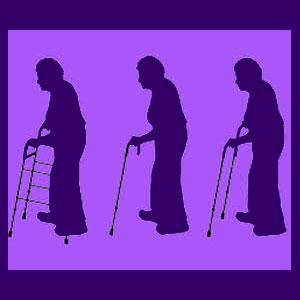
Sciatica therapy is big business within the larger back care industry. In fact, when doctors and chiropractors hear the word sciatica, they can practically hear those cash registers ringing loud and clear. Of all the possible spinal pain syndromes, sciatica complaints last the longest and feature some of the absolute worst treatment results. In an industry filled with poor to abysmal curative results for almost any chronic dorsalgia diagnosis, this is saying a lot.
Sciatica is one of the most common of all spinal complaints and is also known for the longevity of the symptoms it creates. Many doctors and chiropractors specialize in the treatment of sciatic nerve pain and related complaints. It is unfortunate that most therapy options are either symptomatic treatments or misguided attempts at a cure. This treatise provides a look at why sciatica care regimens are generally so ineffective.
Symptomatic Sciatica Therapy
Symptomatic back pain treatments are therapies which only seek to relieve the symptoms of the condition, but do nothing at all to cure the underlying causes. In the case of sciatica, the condition is the symptom. Sciatica is not a disorder itself, but merely a symptom of some underlying physical or psychological causation.
Most common conservative treatment options use temporary relief modalities to make life with sciatic pain more bearable. These treatments might also make the patient more mobile and functional, but they certainly do nothing at all to end the symptoms. In essence, they may or may not help to relieve sciatica pain, but they certainly prolong and perpetuate the condition by keeping the patient in continuous care.
This dependency is the most sinister part of all symptomatic treatments. However, it is also the key to the economic windfall enjoyed by care providers. Maybe they should simply call it $ciatica.
Surgical Sciatica Care
Drastic therapies, such as surgery, are often inappropriately prescribed for sciatic pain. Back surgery is not normally recommended unless the pain becomes a serious and ongoing problem.
Surgeries typically pre-suppose that anything found to be out of the ordinary in a perfect spinal anatomy must be the root source of pain. This ridiculous theory has been proven wrong time and time again, but still guides the hands of millions of surgeons worldwide who cut, burn and amputate their way to financial wealth.
It is a well known fact that virtually no one has a perfect spinal anatomy, since it is normal and expected to suffer wear, tear, degeneration and injury as part of life. These processes leave indelible markers, called abnormalities, in the spine. In reality, they should be deemed normalities, since they are found in every adult I have ever met, including the very doctors who diagnose them.
I am not completely against surgery. I merely say that it is performed far too often and for the wrong reasons in many patients. When truly indicated, a quality surgeon performing a necessary operation can truly cure a patient for good. It is just so rare that the circumstances of treatment fit this ideal profile and therefore do not enjoy the positive curative results one might expect from such a drastic and invasive care modality.
Mindbody Sciatica Therapy
Chronic sciatica is sometimes mistakenly blamed on a herniated disc or some other coincidental spinal irregularity. In some of these circumstances, the real reason for the pain might be oxygen deprivation of the sciatic nerve and its peripheral branches. This is the most logical explanation for the diversity and changeability of many sciatica syndromes when symptoms do not correlate to a diagnosed structural issue.
This also explains why most medical and complementary treatments just do not adequately relieve many sciatic pain problems. Some relief might be provided through the powerful placebo effect, but it will not be long before the symptoms return for another round of torture. Even in cases where the immediate symptoms are rectified, the patient usually develops a case of back pain substitute symptoms in another area of the back or body.
If the cause is truly not anatomical, then any physical treatment is a complete waste of time and resources. It is however, a huge financial boon for the treatment provider. Maybe this might help to explain why sciatica therapy is still a popular specialty despite its generally poor results.




